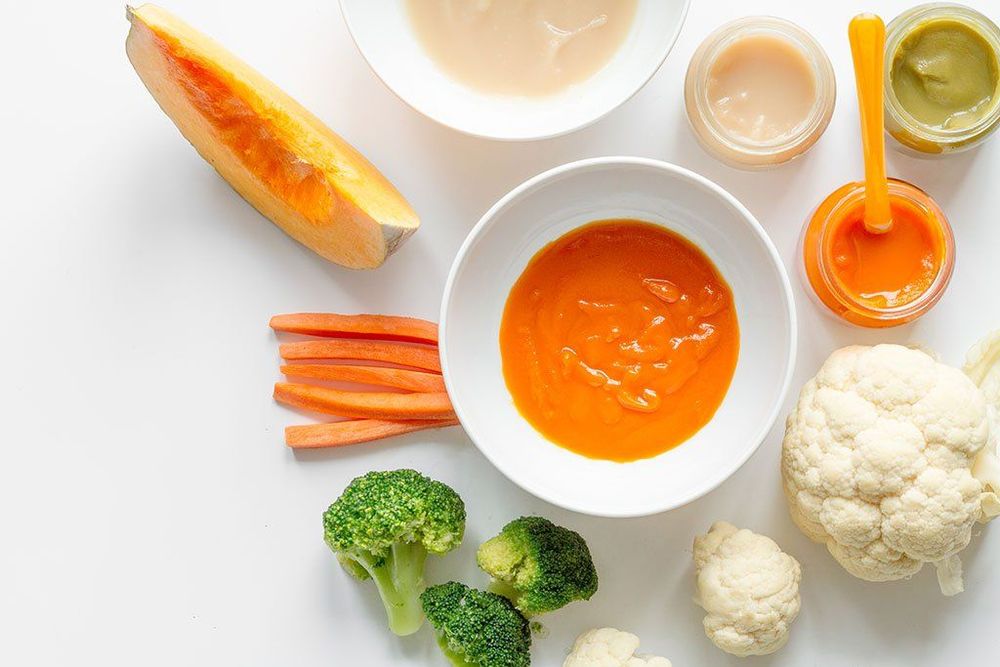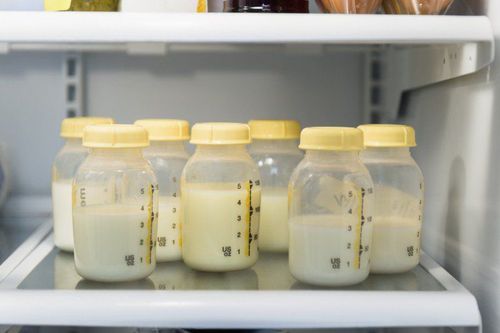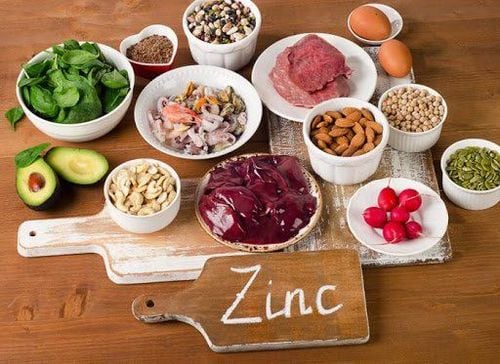A child's nutritional status and overall health significantly impact their growth in weight and height. When babies reach the crawling stage, many parents often wonder what the standard weight for an 8-month-old girl is. Depending on the child's age and gender, the standard weight may differ.
Generally, the weight of an 8-month-old girl is slightly less than that of a boy.
1. Characteristics of Height and Weight in an 8-Month-Old Girl
The early months of a child's life are marked by the most rapid growth. After this phase, growth in weight and height tends to slow down due to increased physical activity. Weight and height are key concerns for parents as indicators of a child's health. Many parents with babies in the crawling stage are curious about the standard weight for an 8-month-old girl. The standard varies depending on age and gender.
In general, the weight of an 8-month-old girl, as per World Health Organization (WHO) standards, is typically lower than that of boys. According to WHO, the average weight of an 8-month-old girl is 7.9 kg. A weight below 7.0 kg is considered at risk of malnutrition, while below 6.3 kg is classified as malnourished. For example, if an 8-month-old girl weighs 7.5 kg, her weight falls within the normal range. However, a weight of 6.1 kg indicates malnutrition. Conversely, a weight above 9.0 kg suggests a risk of obesity, and above 10.0 kg is categorized as obese. The standard height for an 8-month-old girl is 68.7 cm, with the lower limit being 64 cm and the upper limit 73.5 cm.
2. How to Care for an 8-Month-Old Baby
A child's nutritional status and health play pivotal roles in their growth in weight and height. Parents must understand what an 8-month-old can eat and how to provide age-appropriate care to enhance nutrition and ensure healthy development.
2.1. Essential Nutrients in the Diet of an 8-Month-Old Baby
- Protein: Essential for brain development and immune function, protein is fundamental for sustaining cellular health. Children lacking protein are at a higher risk of malnutrition.
- Iron: A critical element in blood formation, iron is abundant in red meat, dark green vegetables, legumes, and cereals. Iron deficiency can cause fatigue, pale skin, delayed development, and increased susceptibility to illness.
- Zinc: Among micronutrients, zinc plays a vital role in a child's early development. Zinc deficiency can lead to increased vulnerability to infections. Zinc is found in beef, lamb, chicken, shrimp, pumpkin seeds, asparagus, lentils, sesame seeds, and yogurt.
- Omega-3 Fatty Acids: Beneficial for brain development, omega-3 also supports heart, skin, and eye health. Parents can include omega-3-rich foods such as fish, algae, and nuts like chia seeds and walnuts by blending them into porridge or cereal.
- Vitamins: Essential vitamins such as A, C, D, and others should be supplemented during this period. Vitamins act as enzymes involved in the body's metabolic processes, including the synthesis, transformation, and utilization of nutrients for cells and the body. Adequate and balanced supplementation of vitamins ensures the child’s stable and harmonious development during the crucial early years of life.

2.2. Nutrition for an 8-Month-Old Baby
Nutrition remains a top priority for an 8-month-old’s development. As babies become more active with crawling, they expend more energy compared to earlier stages. At this age, rapid physical and brain development requires meals rich in essential nutrients to support overall health and steady weight gain.
- Continue breastfeeding daily, interspersed with 2–3 solid meals. Breast milk is the best source of nutrition for children under 24 months, containing colostrum that boosts immunity and fosters healthy development.
- Provide 5–6 meals a day, including three main meals and 2–3 snacks.
An 8-month-old requires about 600-800 ml of milk daily, with solid meals (porridge or cereal) totaling 200 ml per meal, 2-3 times daily. - Each meal for the child should include the following four food groups: 50–60g of carbohydrates such as rice, porridge, flour, and green beans; protein from 50–60g of lean pork, beef, eggs (both egg whites and yolks), fish, shrimp, or minced crab (if making porridge with bone broth, include the cooked meat as it contains a high amount of protein); a variety of green vegetables, root vegetables, and fruits such as pumpkin, carrots, water spinach, amaranth, apples, papaya, bananas, oranges, and kiwis to provide fiber as well as essential vitamins and minerals; and 15–20g (about 4 to 6 teaspoons of 5ml each) of child-friendly cooking oils (such as sesame oil, olive oil) or animal/vegetable fats.
- The standard ratio for cooking porridge is 10g of rice to 70 ml of water.
- Gradually increase food consistency.
- Supplement meals with yogurt, fruits, cream, and cheese for added vitamins, minerals, and beneficial bacteria that support digestion.
- Meals should be varied regularly, prepared in different ways, colorful, and presented attractively to capture the child's attention. This approach helps the baby become accustomed to various types of food and different flavors, while also stimulating their appetite.
- It is recommended to coo fresh meals for each meal to ensure the nutritional value is preserved. Reheating food should be avoided as it can reduce the quality of the dish.
It is important to plan a balanced and scientific meal schedule for breakfast, lunch, and dinner, as well as snacks, to help the child establish a consistent eating routine. The main breakfast usually begins at 8 AM, and the main meals (breakfast, lunch, and dinner) should be spaced about 5 hours apart. Snack times typically fall around 10–11 AM. Snacks (near midday, evening, and late-night) should be spaced 2 to 3 hours apart from the main meals. - Meal times should not be extended for too long.
- Create a relaxed and joyful atmosphere, and encourage and praise the child during meals.
- Do not pressure or threaten the child to eat, as this could create stress and reluctance to eat, potentially leading to poor appetite.
- Avoid seasoning meals too salty and refrain from buying pre-cooked food for the child, allowing the baby to fully experience the flavors of each dish, develop their taste buds, and form the habit of eating food with less salt to protect their health.

2.3 Dental care for an 8-month-old baby
- Examine and care for the baby's teeth and oral health daily.
- Chewing and swallowing food helps the baby release digestive fluids in the mouth, improving their sense of taste. Support the development of the chewing and swallowing reflex by gradually increasing the texture of the food. At 6 months old, the baby consumes liquid food, which progresses to thicker purees or semi-thick foods by 7-8 months, and by 12 months, the child can eat whole rice porridge, soft rice, or short-cut noodles and pho that are cooked until soft.
- Avoid feeding the baby pureed food for an extended period.
- Encourage the baby to hold their food by offering dishes shaped in sticks or long pieces.
- After each meal, parents can offer the baby a small amount of water to help clean their mouth.
- It is essential to teach an 8-month-old baby the habit of drinking water from a cup and limit the use of straws or bottles to prevent any negative impact on the development of their dental structure.
2.4 Suggested Meals for an 8-Month-Old Baby
Parents can prepare nutrient-dense meals that promote proper growth in height, weight, and brain development:
- Pork and straw mushroom porridge
- Chicken and shiitake mushroom porridge
- Pork and sweet gourd porridge
- Pork and winter melon porridge
- Shrimp and amaranth porridge
- Shrimp and Chinese cabbage porridge
- Fish and carrot porridge
- Snakehead fish and sweet potato porridge
- Beef and pumpkin soup
- Tofu and tomato porridge
To help an 8-month-old girl achieve or exceed standard growth metrics, parents should supplement the diet with lysine, essential vitamins, and minerals such as zinc, chromium, selenium, and B vitamins. These nutrients support digestion, enhance nutrient absorption, and improve appetite, fostering comprehensive development.
Stay updated with valuable tips for caring for your child and family by regularly visiting Vinmec.com.
To arrange an appointment, please call HOTLINE or make your reservation directly HERE. You may also download the MyVinmec app to schedule appointments faster and manage your reservations more conveniently.








